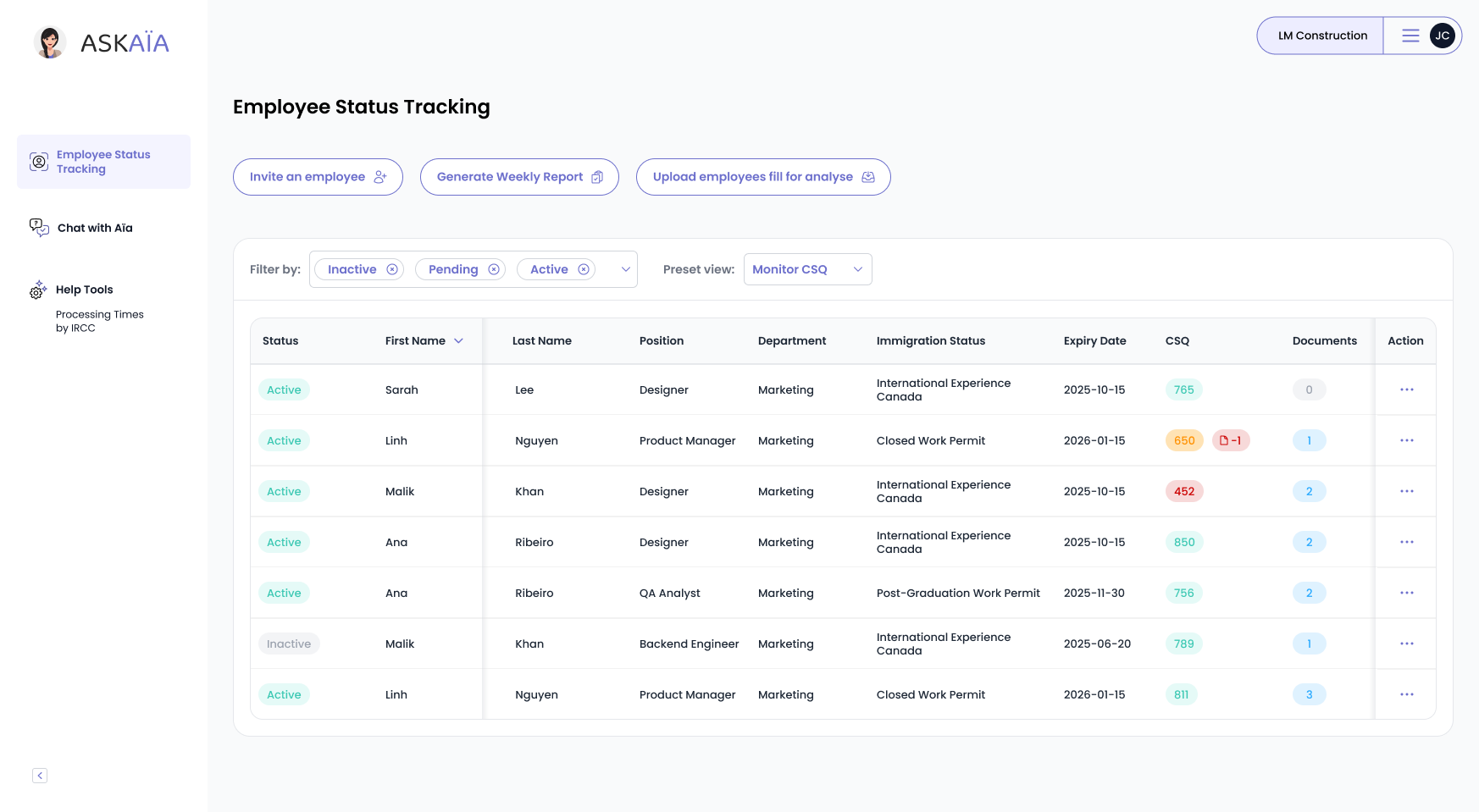Canada’s LMIA system now operates at two speeds: eight-day approvals for Global Talent Stream roles and months-long queues or outright freezes for many Low‑Wage applications.
Inside this article, you’ll discover how those shifting rules break down into five distinct LMIA streams, a salary‑plus‑location method to pick the right one before you advertise, and a two‑minute checklist that flags wage, cap, and timing risks before they can derail your hire.
Why “stream fit” is the new compliance frontier
In 2025, Service Canada no longer “fixes” misfiled applications; it refuses them outright. Your very first decision (“Which stream do we use?”) now sets the queue length, paperwork load, and even employer obligations such as housing or airfare. A quick misclassification at intake can snowball into three extra months of vacancy later.
Meet the five main streams
| LMIA Stream | Main trigger | Key obligations / risks | Avg. processing (2025) |
| High‑Wage | Wage ≥ provincial median (+20 % rule) | Transition Plan; 2‑year audit | ~61 days |
| Low‑Wage | Wage below threshold | 10 % site cap; employer‑paid airfare & housing; potential city freezes | ~61 days |
| Global Talent Stream (GTS) | Tech‑list NOC (Category B) or designated‑partner referral (Category A) | Labour‑Market Benefits Plan; stricter wage floors for some NOCs | 8 days |
| Agricultural / SAWP | On‑farm production or seasonal crops | Pre‑approved housing; fixed season dates | 8–15 days |
| PR‑Support | Job offer tied to worker’s PR pathway | Start 8–9 months before permit expiry; longest queue | ≈214 days |
Let salary do the first cut
Since November 2024, Ottawa has redefined a “high‑wage” job as one that pays at least 20 % above the provincial median hourly wage (for example, Ontario’s median now sits at roughly $30.00, so the high‑wage cutoff is about $36.00). Hit or exceed that number, and you file under the High‑Wage stream, no site quotas, and lighter employer obligations. Miss it by even a penny and the role is reclassified as Low‑Wage, triggering a 10 % cap on TFW head‑count, mandatory employer‑paid airfare and housing, and, in dozens of cities, an outright filing freeze. Run a two‑minute wage check against the latest Job Bank median before posting; in most cases, adding a modest 3–4 % salary bump is cheaper than paying the $1,000 LMIA fee twice, re‑advertising, and losing eight weeks to a Low‑Wage refusal.
| Province | 2025 Median Hourly Wage (CAD) | High‑Wage Cut‑off (+20 %) |
| Alberta | $29.00 | $34.80 |
| British Columbia | $29.00 | $34.80 |
| Saskatchewan | $26.20 | $31.44 |
| Manitoba | $23.00 | $27.60 |
| Ontario | $30.00 | $36.00 |
| Quebec | $27.00 | $32.40 |
| New Brunswick | $23.30 | $27.96 |
| Nova Scotia | $23.50 | $28.20 |
| Prince Edward Island | $22.60 | $27.12 |
| Newfoundland & Labrador | $25.00 | $30.00 |
| Yukon | $30.00 | $36.00 |
| Northwest Territories | $34.00 | $40.80 |
| Nunavut | $33.00 | $39.60 |
Source: Government of Canada Job Bank, January 2025.
Location is now a filter, too
Since September 2024, Service Canada has automatically refused any Low-Wage LMIA filed in a Census Metropolitan Area (CMA) where the rolling 3-month unemployment rate is 6% or higher. The blacklist currently spans 24 urban regions, from Windsor and Winnipeg to Halifax, and is updated quarterly. Only four essential sectors (agriculture, food production, construction, and healthcare) are spared.
For every other occupation, employers must either:
- Raise the wage into the High‑Wage stream.
- Pivot to the Global Talent Stream if the NOC qualifies.
- Recruit in a location below the 6 % threshold.
Québec imposes an additional barrier: all Low‑Wage applications tied to worksites in Montréal or Laval are suspended until November 30, 2025, regardless of the sector. HR teams in those cities should default to High‑Wage, GTS, or intra‑company transfer strategies and monitor quarterly MIFI bulletins for any policy shifts.
Two‑minute “Stream Selector” checklist
| Step | Question | If YES | If NO |
| 1 | Salary ≥ median + 20 %? | File High‑Wage (or GTS if eligible) | Go to Step 2 |
| 2 | NOC on the GTS tech list or Category A referral? | File GTS (≈ 8‑day processing) | Go to Step 3 |
| 3 | Worksite in a CMA with ≥ 6 % unemployment (or Montréal/Laval freeze)? | Low‑Wage will be refused → raise wage or switch streams | Go to Step 4 |
| 4 | Will Low‑Wage hires push the site above the 10 % cap? | Raise wage or pivot to GTS/High‑Wage | Go to Step 5 |
| 5 | Need the worker onsite within 90 days? | Choose GTS, SAWP, or an LMIA‑exempt route | High‑/Low‑Wage timeline is acceptable |
Hidden pitfalls, and how to dodge them
Even well‑run HR departments can get blindsided by last‑mile mistakes. Scan the traps below so you can fix them before they snowball into refusals or permit gaps.
- Cap creep – Seasonal or short‑term hires can nudge your site over the 10 % Low‑Wage ceiling, shutting the door on future Low‑Wage applications.
- Salary drift – mid‑year raises that don’t keep pace with the provincial median can push a High‑Wage role into Low‑Wage territory at renewal, triggering caps and costs.
- Expired GTS referrals – Category A referrals have shelf lives; let them lapse and the next candidate goes back into a 61‑day queue.
- Freeze blind spots – filing from a compliant head office won’t save a satellite site in a high‑unemployment CMA; the worksite’s location rules the file

Let’s get your demo started
Book a demo
You May Also Like
These Related Stories

Act Now: Canada Widens Low-Wage LMIA Ban Across 26 CMAs
At a Glance " \n Effective July 11, 2025, low-wage LMIA applications are banned in 26 urban regions, including Toronto, Vancouver, Calgary, and Montre …

Quebec Expands LMIA Suspension, Impacting Low-Wage Jobs
Quebec is tightening restrictions on low-wage foreign labor. The government has extended its suspension of low-wage Labour Market Impact Assessments ( …

New LMIA Rules Limit Low-Wage Foreign Worker Hiring in 2025
Since January 2025, Canada will tighten rules on low-wage LMIA applications, restricting hiring in high-unemployment regions. This aims to prioritize …


